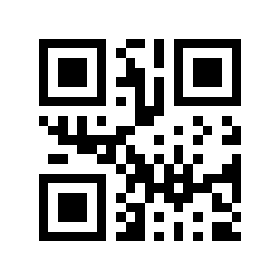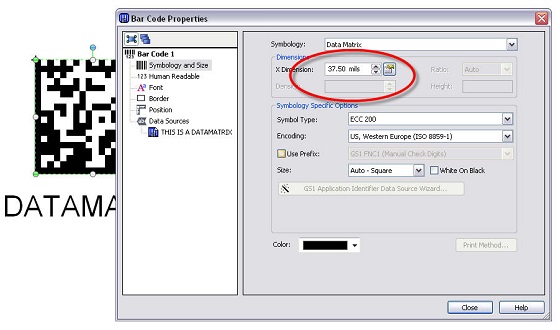

The member organizations issue the manufacturer’s codes, and the manufacturers set their own product codes. It may identify the national GS1 member organization or a special use. The GS1 prefix is issued by GS1, the international barcode standards organization. The main differences between EAN-13 and UPC-A (besides the extra leading digit) are that with EAN-13, the manufacturer and product codes can vary in length, and that the first three digits make up the GS1 prefix, or “country code.”
#Barcode x out code#
The EAN-13 standard includes UPC-A barcodes adding a leading 0 to a UPC-A code turns it into the equivalent EAN-13 code. EAN-13 adds a 13th digit on the far left side of the UPC-A code (so that it becomes the first digit). The EAN-13 code is basically an international version of UPC-A. A side-effect of this technique is that the only numbering system codes allowed are 0 and 1. UPC-E uses a much more complex trick to compress the checksum and the number system code. The details of the technique are complicated, and it doesn’t work for everything, but it does cover all codes with a total of 5 leading/trailing zeroes, as well as a significant number of codes with four zeroes. He UPC-E code’s most basic trick is to remove trailing zeroes in the manufacturer’s code, and leading zeroes in the product code. it contains the same information as a UPC-A label, but it uses some tricks to reduce the number of digits to six. The UPC-E barcode can be used when available space is too small for a UPC-A barcode.


Pharmaceuticals: For drugs and some other pharmaceutical products.The five digits on the right are the product code (determined by the manufacturer). The five remaining digits on the left side of the barcode are the identify the manufacturer. Typical retail products: Indicated by a first digit of 0, 1, 6, 7, or 8.The 10 digits that follow contain information about the product, and in all of the applications described below, the digit on the far right (not included in the application description) is a checksum, which can be used to test the accuracy of the scanner reading.īelow is a list of common UPC-A applications: The actual system of numbering depends on the type of product and the purpose of the barcode the first digit of the barcode indicates the numbering system. The logic behind doing this is a little complicated, and involves a mathematical property called “parity,” but the effect is to reverse black and white, and to allow the scanner to tell whether it’s reading the code from left to right or from right to left. When a digit is used on the left side, the bars are black and the spaces are white, and when it is used on the right side, the colors are reversed. The middle symbol separates the left side and the right side, which are coded differently. A UPC-A barcode contains 12 digits, along with a quiet (blank) zone on either side, and start, middle, and stop symbols. UPC-A is strictly numeric the bars can only represent the digits from 0 to 9. The UPC-A (also referred to simply as the UPC) is the standard retail “price code” barcode in the United States. Barcodes can be divided into three general types: linear, stacked linear, and two-dimensional (or 2D): Linear Barcodes UPC-A Barcode 101: Guide to Barcode SymbologiesĪ barcode symbol is a machine readable image which conveys data.


 0 kommentar(er)
0 kommentar(er)
